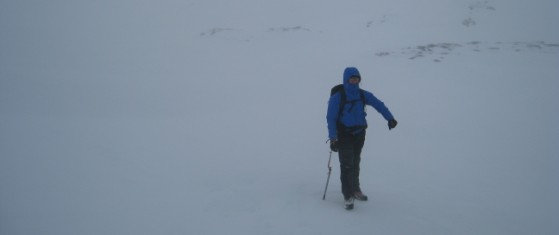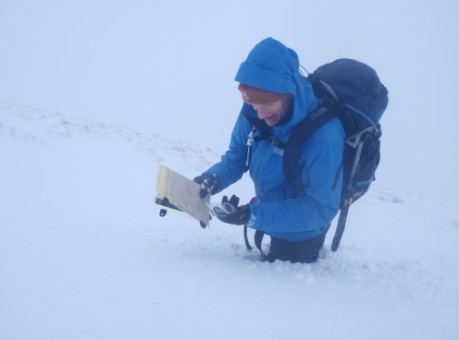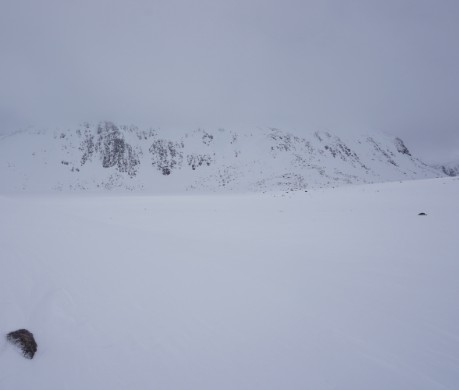For many of us winter is when Scotland's hills and mountains come into their own. But they are a serious environment to be in, particularly so in winter conditions, and getting out to enjoy them requires equipment and skills beyond those needed for summer hill walking, climbing, biking and on-piste skiing.
Mountaineering Scotland is working with our partners including Scottish Mountain Rescue, Glenmore Lodge, Scottish Avalanche Information Service, Developing Mountain Biking in Scotland, Snowsport Scotland, Glenmore Lodge, Police Scotland and Mountain Training Scotland to provide the information, advice and knowledge you need to enjoy winter in the Scottish hills safely and responsibly, whatever your activity.
Read on to find out more about the #ThinkWINTER mindset and search for the ThinkWINTER hashtag on social to support the campaign and get involved.
Get into the ThinkWINTER mindset with this article giving an introduction to the issues which make Scotland's mountains a very different prospect in winter than in summer, and how hillwalkers need to step up their game in both equipment and skills.
By telling your clients, customers and online followers about #ThinkWINTER, you can help us make this the biggest and most effective campaign yet and help us to reach further.
All journeys to the mountains require some degree of planning, but that has to step up a notch in winter, because of all the factors mentioned below - weather, snow, low temperatures, poor visibility and less daylight as well as your own level of fitness and experience. Plan for success and you're more likely to have a great time this winter - find out how via the link below.
When you get a good day in winter it can be positively ecstatic, but you also have to be prepared for days of bad weather. Itís not just a case of wrapping up against the cold. Low cloud or falling snow can reduce visibility to just a few metres Ė or even less Ė so far more demands are made on your navigational ability. Wind, too, is likely to be a factor, and as well as hindering progress or even blowing you over, it can whip up snow to produce white-out conditions even on a sunny day. The wind can also blow snow and ice directly into your face, making it impossible to see without goggles.

This is a genuine photograph taken during full white-out conditions. There is quite literally nothing to see. No difference can be seen between snow and sky and the outline of the hill and the mountains beyond are totally invisible.

Even where visibility is considerably better, it can be hard to pick out any useful navigational features.
Time is a crucial factor in winter. You have fewer hours of daylight to begin with, and everything you do is most likely going to take longer.
While rare conditions of hard-packed snow can allow for fast movement, itís far more common to be ankle to knee-deep for long sections of your journey, which is going to take longer and can be extremely energy-sapping.
And if the snow is any more than knee deep for any distance you may want to reconsider your route or even your entire journey, for progress will be agonisingly slow and will be massively tiring.

Snow presents a range of challenges. Underfoot, it can range from powder snow over jagged scree or long heather, to soft slush which is slippery underfoot and saps your energy, to ice-hard neve which requires you to wear crampons for grip.
As mentioned above, it can also be blown into your eyes by wind, but it can also blind you by reflecting the sunlight, making tinted goggles or sunglasses advisable. (Itís also very good at reflecting the UV light from the sun, so an effective sunscreen is another essential.)
Something else that snow does Ė which may seem obvious Ė is erase all trace of paths. In the photo here not only a well-trodden footpath, but also a whole loch have disappeared under the snow. That means your navigation skills need to be up to scratch, as thereís no easy option of just following a track. There may be a trail of footprints on the snow, but itís sobering to stand on a windy day and see how quickly those footprints can completely disappear.
Snow is also, of course, the raw material for cornices and avalanches, two hazards which present a very real hazard for winter mountaineers.

When starting with winter mountaineering it's important to make sure your navigation and hillcraft skills are up to scratch under summer conditions and then look to develop those skills so that you are ready for the added challenges of winter.
Mountaineering Scotland runs basic winter navigation courses, winter skills and avalanche awareness courses to help you gain or improve skills, and our partners Glenmore Lodge also offer a wide range of basic and more advanced skills courses throughout the winter season.
Watch our winter safety and skills webinars from earlier in the year, with Mountaineering Scotland Mountain Safety Adviser, Ben Gibson, and supported by Cotswold Outdoor.
The first webinar was aimed at beginners, who may be venturing out into the hills for the first time this winter, and the second aimed at more experienced hill-goers with the focus on decision making and avalanche awareness.
During the live sessions recorded for Ben's two winter safety and skills seminars there were a number of questions asked which there was not time to answer.
You can now read these questions and Ben's answers, with links to further information.